
Are you looking to make the perfect latte at home? You’re not alone! Many people enjoy the rich and creamy taste of a latte, a popular coffee drink that combines espresso with steamed milk and a touch of foam.
Learning to make a latte at home can save you time and money while still allowing you to enjoy your favorite coffee beverage.
In order to make a latte, there are a few methods you can use, depending on the equipment you have at hand. You can use an espresso machine to create the espresso and steam the milk, or you can even make a latte without fancy equipment, using just a moka pot for brewing the coffee and a microwave or stovetop for frothing milk.
Whichever method you choose, the key to a delicious latte lies in selecting quality coffee beans and mastering the delicate art of frothing the milk to achieve a velvety, smooth texture.
Soon, you’ll be creating cafe-quality lattes right in the comfort of your own home.
Understanding the Basics of a Latte
A latte is a popular espresso-based coffee drink that you can find in almost any coffee shop around the world. The essential components of a latte are espresso, steamed milk, and a delicate layer of milk foam. It’s important to grasp these basics before learning to make your latte at home.
First, let’s talk about the espresso. Espresso serves as the foundation for a latte, providing a strong and robust flavor. Typically, a shot of espresso contains about 1 to 1.5 ounces of concentrated coffee, which balances with the steamed milk and foam.
For a latte, you’ll need a high-quality espresso machine to extract the intense flavor from your coffee beans.
Now, the steamed milk is another vital element in a latte. The milk not only adds creaminess to the drink but also affects the overall texture. Whole milk is generally recommended, as it contributes to a richer taste and smoother mouthfeel.
However, alternatives such as soy, almond, and oat milk can also be used for those with dietary restrictions or personal preferences.

To create the perfect steamed milk, you should:
- Start with cold milk and use a stainless steel frothing pitcher.
- Fill the pitcher halfway, as this will give you enough space for the milk to expand as it steams.
- Steam the milk using the steam wand on your espresso machine, gently heating it and creating the desired foam.
Finally, milk foam is what sets a latte apart from other coffee beverages. As mentioned, a latte features a thin layer of milk foam on top, which adds a velvety, luxurious mouthfeel.
The foam is created during the steaming process, as tiny air bubbles get incorporated into the milk. Properly prepared foam should have a silky, glossy appearance and a delicate texture.
Here’s a quick breakdown of a latte’s composition:
- 1 to 1.5 ounces of espresso
- 5 to 6 ounces of steamed milk
- A thin layer (about 0.2 inches) of milk foam
By mastering these key elements, you can confidently make a delicious latte at home and impress your friends and family with your barista skills. So, let’s get brewing and enjoy the delightful experience of crafting your perfect latte!
How to Make a Latte at Home

Making a latte at home has never been easier with just a few simple steps. This homemade latte recipe will take your coffee game up a notch without any fancy equipment.
You can use instant espresso or instant coffee for this recipe. You don’t need to be a barista or spending time visiting your local coffee shop.
First, prep your ingredients:
- Espresso: 1-2 shots according to your taste preference
- Milk: 8 ounces
- A wide-mouthed jar or container with a lid: large enough to hold the milk and create froth
- A microwave or stovetop to heat the milk
- Start by preparing your espresso.. For a stronger flavor, you may want to use two shots. Pour this into your favorite mug.
- Next, measure 8 ounces of milk into your container and steam the milk.
- Carefully pour the steamed milk over your prepared espresso or coffee. As you pour, try to hold back most of the froth in your jar until the very end. Use a widemouthed metal spoon for this. This will allow the milk to mix properly with the espresso. Finally, top your latte with the remaining froth from the container.
Essential Tools for Making a Latte
To make a latte, you’ll need a few essential tools. First and foremost, an espresso machine is important, as it will produce the concentrated coffee needed for a latte.
You can also consider alternatives such as a Moka Pot, Nespresso machine, Keurig, or an Aeropress for brewing espresso-like coffee.
A milk frother is essential for achieving the creamy milk foam that tops a latte. You can use a handheld frother or a french press to froth your milk. Some espresso machines come equipped with a steaming wand, which can steam and froth milk directly.
Here’s a list of the essential tools:
- Espresso machine or alternative brewing method
- Milk frother (handheld, french press, or steaming wand)
- Thermometer
- Spoon
- Saucepan (if using a non-wand method)
- Portafilter
A thermometer is useful in ensuring your milk reaches the proper temperature for frothing. Typically, you’ll want to heat your milk to around 150°F (65°C). Keep in mind that overheating can cause the milk to lose its sweetness and become scalded.
When frothing milk, it’s important to have a spoon on hand to hold back the foam when pouring the milk into the latte. This helps to achieve the perfect balance between liquid milk and milk foam in your drink.
In addition to having the necessary tools, remember to use high-quality coffee beans and fresh milk for the best results. Now that you’re equipped with the essential tools, you’re ready to start making delicious lattes at home. Happy brewing!
Process of Brewing Espresso
First, you need to select the right espresso beans for your latte. A dark roast is commonly used since it produces a bold, rich flavor. Once you’ve chosen your beans, grind them to a fine consistency, ensuring that the coffee grounds are suitable for an espresso machine.
To begin brewing, measure the appropriate amount of coffee grounds for a single or double espresso shot. It is crucial to use the correct amount, as it determines the strength and taste of your latte.
Next, fill the portafilter basket with the ground coffee, and make sure to press it firmly into place on your espresso machine1.
When you start brewing, let the water run through the coffee grounds slowly. This process allows for the extraction of all flavors and aromas from the espresso grounds. The brewing process typically takes about 25-30 seconds.
- Prepare your espresso machine
- Grind your espresso beans
- Fill the portafilter with finely ground coffee
- Press the coffee grounds firmly into place
- Brew the espresso shot slowly to extract flavors from grounds
- Once complete, pour your shot of espresso into a cup or mug
During the brewing process, pay close attention to the color of the liquid. As the espresso shot pours, it should transition from a dark brown to a lighter, golden color. This change signals that your shot is ready to be combined with steamed milk to create your perfect latte.
While the process of brewing espresso may seem intimidating at first, with time and practice, you’ll be able to create a delicious latte in the comfort of your home.
Don’t hesitate to experiment with different types of beans and brewing techniques to find the combination that best suits your tastes.
Technique of Frothing The Milk
Before diving into the latte-making process, it’s essential to understand the art of milk frothing. The perfect latte has a rich, creamy layer of frothed milk on top. So, let’s begin by exploring the steps to achieve this ideal texture.
Methods for Frothing Milk
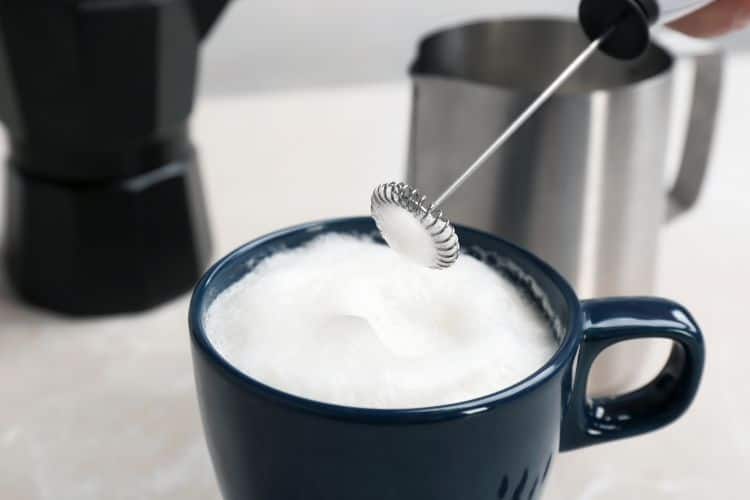
You can create a froth using a variety of tools: a steam wand found in espresso machines, a handheld electric milk frother, or even a simple manual whisk. Whichever option you prefer, the key is to introduce air into the milk, creating that desirable foam.
Using a Steam Wand
A steam wand is a popular choice for frothing milk. To use it, follow these steps:
- Start with cold milk and a clean, chilled frothing pitcher.
- Fill the pitcher with milk, not exceeding the halfway point.
- Submerge the tip of the steam wand into the milk, just below the surface.
- Open the steam valve while maintaining the wand’s position.
- As the milk froths, gently lower the pitcher to ensure the wand stays just beneath the milk’s surface.
- When the milk has doubled in volume and reached your desired temperature, stop the steam.
Alternative Methods
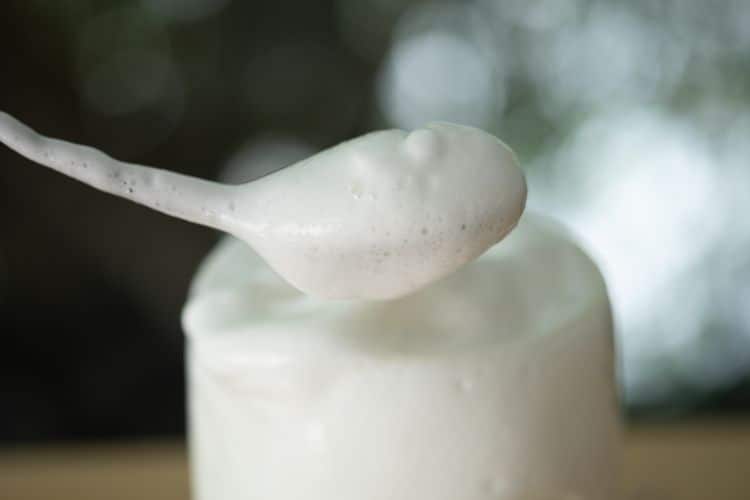
If you don’t own an espresso machine with a steam wand, don’t worry!
There are several other ways to froth milk, including:
- Handheld electric frother: Immerse the frother into cold milk and switch it on, moving the frother up and down to create a foam.
- Manual whisk: Hold a whisk between your palms and rub them together quickly, agitating the milk to create a froth.
- Kitchen gadgets: Pour milk into a lidded jar and shake it vigorously, or use an immersion blender to introduce air and create a foam.
- Microwave: Heat milk in a microwave-safe container without a lid, watching closely to prevent boiling, and then whisk or shake to create froth.
Finishing Touches

Once you’ve frothed the milk, you’ll have a layer of microfoam on top and warmed, steamed milk under it. Before pouring, gently swirl the milk in the pitcher to create a consistent, velvety texture.
Now that you’ve frothed your milk, you’re ready to pour it over your espresso shot and enjoy your homemade latte. Don’t forget – practice makes perfect, so continue experimenting with different frothing methods to find the one that works best for you!
Keep in mind that different dairy and non-dairy milks also behave differently when frothed, so try various options to find your perfect blend. Happy latte making!
Creating a Balanced Latte

Starting with quality ingredients is essential when making a latte. Be sure to use espresso roast coffee and a fine grind for an authentic flavor.
An even latte ratio is key as well, so aim for equal parts espresso, steamed milk, and milk foam for the perfect balance. Choose whole milk for the creamiest texture and best frothing capabilities.
To begin, chill the milk before frothing. This helps in achieving velvety milk foam as chilly milk foams better. For alternative milk options, try barista-style almond milk, oat milk, or coconut milk.
While steaming your chosen milk, focus on creating a smooth, uniform texture by using a swirling motion with a steaming wand. Once ready, carefully pour the steamed milk into your espresso-filled latte cup, making sure they mix well.
Latte art isn’t just for aesthetics; it also indicates a well-crafted latte. For beginners, start by pouring a simple heart or rosetta pattern. With practice, experiment with intricate designs to impress your friends and make your at-home coffee experience more enjoyable. A properly frothed milk should create a smooth canvas for your latte art.
Many coffee enthusiasts may confuse a latte with a flat white. They are similar; however, the main difference is that a flat white contains a higher espresso to milk ratio, resulting in a more potent coffee flavor.
By mastering the latte ratio, you’ll be able to create a classic latte that stands out from other espresso-based drinks.
Incorporating these tips and experimenting with different recipes, you can create a delicious, well-balanced latte at home. After mastering the basics, personalizing your latte with flavored syrups or unique milk alternatives will elevate your coffee game to new heights.
Remember, practice makes perfect, so keep trying until you’re consistently crafting a top-notch latte.
Types of Milks for Lattes and Their Differences
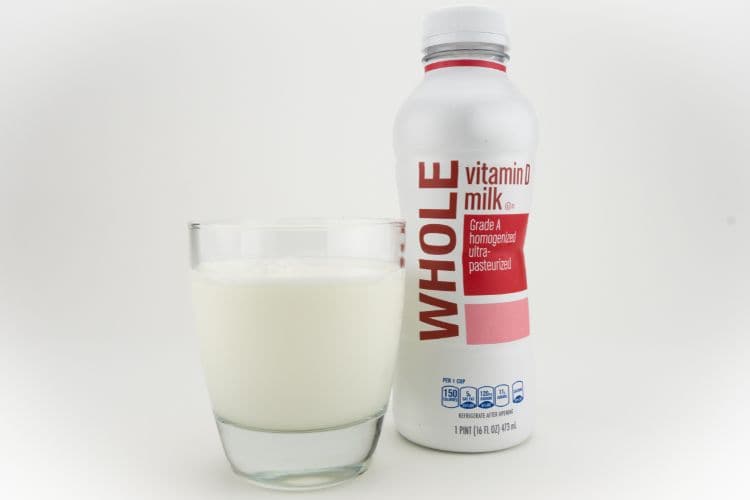
When it comes to making lattes, the type of milk you choose can impact the taste and texture significantly.
There’s a wide range of options to consider, from traditional dairy milk to various non-dairy alternatives. In this section, we’ll explore different types of milk and how they affect your latte experience.
Whole milk is a popular choice for lattes due to its creamy texture and rich flavor. Its balance of fat, protein, and sugar creates a smooth, velvety texture when steamed and helps maintain a stable foam. Whole milk delivers the classic latte experience you may be accustomed to.
2% milk, or reduced-fat milk, is another option for those who prefer a slightly lighter taste. This type of milk still has enough fat content to produce a decent foam for your latte. However, it may not be as rich and creamy as whole milk.
For a more health-conscious choice, you can opt for skim milk. Although most of the fat has been removed from this milk, it can still be effectively foamed.
Skim milk tends to produce a lot of foam, making it a suitable choice for lattes. However, note that the flavor may not be as rich and creamy as what you get with whole milk.
If you’re allergic to dairy, vegan, or simply looking for plant-based alternatives, there are plenty of non-dairy milk options available. Almond milk is a popular choice but may not create a stable foam. It has a nutty flavor that complements espresso, but the texture may not be as creamy as dairy milk.
Soy milk is another non-dairy alternative with a consistency that’s closer to dairy milk. Soy milk froths well, making it a good choice for lattes. However, it can impart a slightly sweet, bean-like flavor to your drink.
Oat milk is often recommended as the best non-dairy milk for lattes due to its creamy consistency and ability to froth well. The subtle, natural sweetness of oat milk pairs well with espresso, making it a popular choice among baristas and coffee enthusiasts.
Finally, coconut milk can be used to make tropical-inspired lattes. Its thick, creamy consistency works well in a latte, but the coconut flavor may dominate the drink, overpowering the espresso. Bare in mind that coconut milk may not froth as well as other milk alternatives.
Experimenting with different milk options will help you find the perfect mix of taste and texture for your ideal latte. While one type of milk may work well for some, you might enjoy the unique flavors and consistencies found in other varieties. Give these different milk types a try to find what best suits your palate.
Sweetening Options for Your Latte
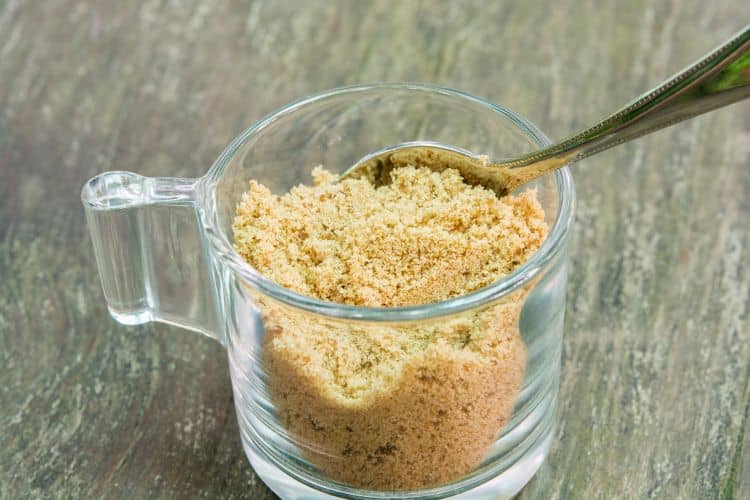
Are you looking to add a delightful hint of sweetness to your homemade latte? There’s no shortage of options! When it comes to satisfying your sweet tooth, a variety of sweeteners are readily available. In this section, we’ll discuss some popular choices.
Sugar is a staple sweetener in many households, and it can work wonders in a latte. Whether you prefer white or brown sugar, a teaspoon or two can add just the right amount of sweetness.
You can also experiment with raw sugars like turbinado or demerara to change the flavor profile slightly but remember to add it subtly.
Another classic choice is honey. Rich, smooth, and delightfully sweet, honey enhances the taste of your latte while also offering some health benefits. To incorporate honey into your favorite latte, try adding a teaspoon of your preferred variety, such as clover or orange blossom.
If you enjoy a bold and rich flavor, caramel syrup could be the perfect addition to your latte. Easily available at grocery stores or online, caramel syrup adds extra depth and a smooth, velvety texture to your beverage. Start with a tablespoon and adjust the quantity based on your preference.
Alternatively, you might want to try simple syrup, which is made by dissolving equal parts sugar and water over low heat.
Not only is it incredibly easy to make at home, but it also blends seamlessly into your latte without causing any graininess. With simple syrup, a couple of teaspoons are usually sufficient to sweeten your drink.
To recap, there are various options to sweeten your latte, ranging from sugar and honey to caramel syrup and simple syrup. The key to a perfect beverage lies in finding the right combination that suits your palate. So, don’t hesitate to experiment and find the perfect balance for your latte.
Different Varieties of Latte

Lattes are versatile drinks that come in various flavors and styles. No matter your taste preference, there’s most likely a latte out there for you. Here, we’ll discuss several popular latte varieties.
Classic latte is a staple for coffee enthusiasts. With a one-third espresso to two-thirds steamed milk ratio, this delicious drink is simple yet satisfying.
An iced latte is perfect on a hot day or for people who prefer their coffee cold. It has the same components as a classic latte, but with ice to keep it refreshingly chilled.
For those who enjoy the taste of other syrups, flavored lattes offer delightful options. Some of the most common flavors include vanilla, caramel, and pumpkin spice.
A caramel latte, for example, contains caramel syrup, espresso, and steamed milk, usually topped with whipped cream and caramel sauce, providing a sweet twist to the drink.
Seasonal favorites like pumpkin spice latte and peppermint mocha bring a festive touch to your coffee routine. Both drinks typically incorporate espresso, steamed milk, and their respective flavor syrups, making them perfect additions to your coffee menu during fall and winter seasons.
If you prefer a stronger coffee flavor, a macchiato or cappuccino might be an ideal choice. While not exactly a latte, these espresso-based drinks feature varying amounts of milk and foam, providing a more intense coffee experience.
Lastly, you don’t need to consume dairy to enjoy a delicious latte. Vegan lattes are made with plant-based milk alternatives like almond, soy, or oat milk, ensuring that everyone can savor their favorite coffee drink.
To sum up, lattes come in various styles and flavors, adapting to every taste preference. So, don’t be afraid to try new combinations and find the perfect latte that suits your taste buds.
Garnishing and Presentation Techniques
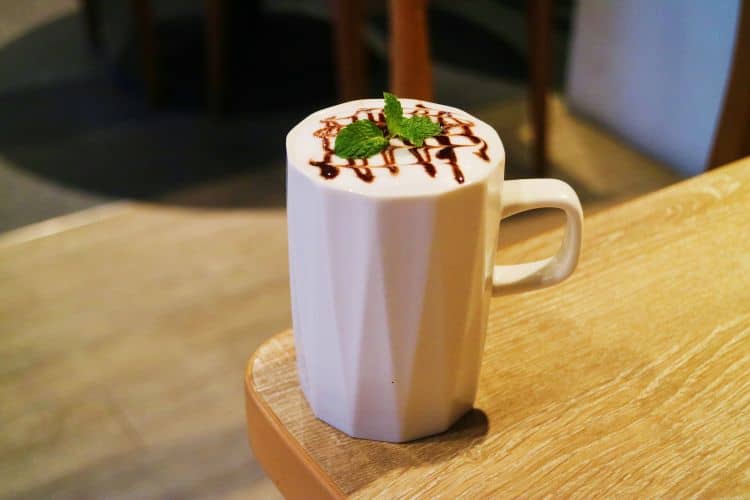
When you make a latte, the presentation is just as important as the taste. Enhancing your latte with garnishes and creative designs not only makes it look more appealing but also adds a touch of personal flair. Here are some tips to up your garnishing and presentation game.
Whipped cream is one popular way to garnish your latte. To elevate the presentation of your latte, delicately layer the whipped cream on top of the crema and finish with a sprinkle of cinnamon or cocoa powder. Using a stencil and a fine mesh sieve can help you achieve unique patterns with your powdered garnishes.
To experiment with latte flavors, try infusing your milk with different syrups or spices. For instance, adding vanilla, caramel, or hazelnut syrup will give your coffee a distinctive taste. Moreover, you can even incorporate seasonal spices like cinnamon and nutmeg during the colder months.
Remember, finding the right flavor balance is crucial, so start with a small amount of your chosen additions and adjust according to your taste preferences.
Latte art is an impressive skill that can enhance the overall presentation of your coffee. Although learning latte art might seem daunting at first, patience and practice are the keys to mastering it.
Begin by learning the essentials like creating a heart or a basic rosetta, focusing on controlling the milk flow and creating symmetrical patterns. Gradually, as your skills improve, you can explore more intricate designs.
A crucial aspect of latte art is maintaining the quality of the crema. To ensure a stable canvas for your design, avoid over-extracting the espresso and steam the milk properly to achieve the right texture. Additionally, using a shallow, wide cup can improve the visibility of your latte art.
Keeping these tips in mind will help elevate the visual aspect of your lattes without compromising on their taste. So, follow your creative instincts and personalize each latte with flair and precision.
Popular Latte Recipes
Are you looking to try your hand at making delicious lattes? Here’s a list of popular latte recipes that you can make at home. These concoctions are sure to impress your taste buds and make you feel like a barista in your own kitchen.
1. Pumpkin Spice Latte:
A quintessential autumn favorite, the pumpkin spice latte combines espresso or strong-brewed coffee, steamed milk, pumpkin puree, pumpkin pie spice, and a dash of vanilla extract. Top it off with whipped cream, and you have a cozy beverage for those chilly days.
2. Matcha Latte:
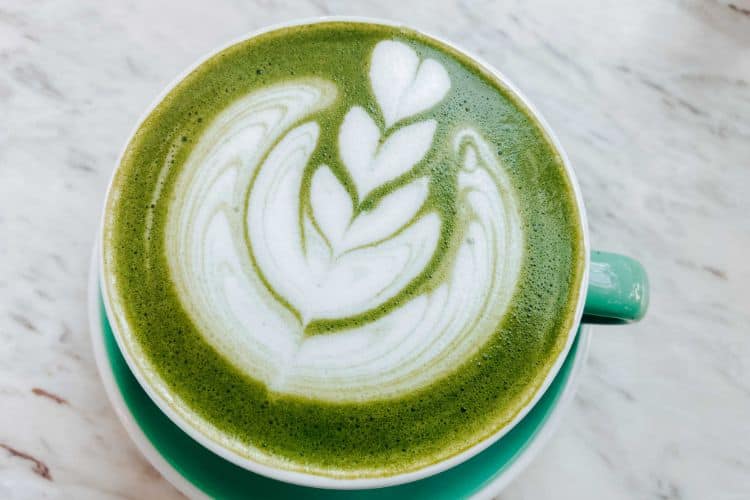
This energizing green tea latte contains matcha powder, hot water, and steamed milk. You can sweeten it with honey or another sweetener of your choice. This drink offers a unique alternative to your usual coffee fix.
3. Vanilla Latte:
Simple and classic, the vanilla latte is a go-to for many coffee drinkers. All you need is espresso or strong-brewed coffee, steamed milk, and vanilla syrup. You’ll find the recipe and instructions here.
4. Caramel Latte:

Caramel lovers rejoice! This indulgent caramel latte recipe features espresso or strong-brewed coffee, steamed milk, and caramel syrup. Drizzle the top with extra caramel sauce for added flair.
Remember, a good latte starts with quality coffee and milk. Don’t hesitate to experiment with different coffee beans and milk types to find what works best for you.
With these recipes in your arsenal, you’re bound to delight in a variety of delicious latte concoctions right from the comfort of your own coffee mug. Enjoy!
The Art of Latte Making
While enjoying a cup of latte, you might wonder how the stunning designs, known as latte art, are crafted. Being a skilled barista means mastering the art of creating intricate patterns on the surface of your lattes.
We’ll make it simple for you to understand the basics of latte art, from creating microfoam to pouring it over the espresso.
The first step in latte art is creating a creamy and velvety microfoam. Steam cold milk in a chilled pitcher using your espresso machine’s steam wand.
Pay close attention to the temperature as it should reach around 150°F (65°C) to achieve the perfect consistency. Once the milk’s texture feels smooth, set it aside for a brief moment.
Meanwhile, brew a shot of espresso with a rich and thick crema. The crema is crucial as it provides a canvas for your latte art design. Ensure your espresso has a good crema by using fresh coffee beans and the right grind size.
When you’re ready, pour the microfoam into your cup of espresso. Hold the pitcher slightly above the cup and pour steadily with a controlled motion.
As you pour, experiment with different techniques like wiggling or shaking the pitcher. These motions help form a variety of designs such as hearts, rosettas, and tulips.
To add more flair to your latte design, use a toothpick or espresso stirrer. Gently run it through the foam to create more intricate patterns. Remember, practice makes perfect, so don’t get discouraged if your initial attempts aren’t flawless.
Below are some general tips to take your latte art to the next level:
- Maintain the cleanliness of your espresso machine and steam wand.
- Use fresh, cold milk for better foam texture.
- Hold the pitcher at a slight angle while pouring to maintain control.
- Start with simple designs before attempting more complex patterns.
By following these guidelines, you’ll be well on your way to mastering the captivating art of latte making. Embrace the challenge and soon, you’ll be impressing friends and family with your barista skills.
Latte and Coffee Culture
When you step into a bustling coffee shop, the aroma of freshly brewed espresso fills the air. Cafes like Starbucks have turned coffee into a social experience, one where macchiatos, cappuccinos, and lattes are enjoyed by millions. In this section, we’ll delve into the intriguing world of latte culture and its connection to coffee as a whole.
A latte is an espresso-based drink topped with steamed milk, usually accompanied by a thick layer of foam. The world of lattes contains endless possibilities, as you can incorporate various flavors and even latte art into the mix.
Latte art, typically crafted with frothy milk, adds a creative and visual flair to the beverage, while flavors like caramel or hazelnut satisfy the palette.
However, there’s more to the latte and coffee culture than meets the eye. Besides providing a caffeine boost, cafes serve as a hub for social gatherings, creative work, or even a place of solace.
The modern coffee shop exemplifies the importance of storytelling, as conversations drift like swirls of frothy milk, while ideas percolate amongst the clatter of coffee cups.
The rise of third-wave coffee adds another layer to the story, with coffee enthusiasts seeking out specialty shops for a curated and high-quality experience. Thanks to this new wave of appreciation, drinkers can easily discern between a macchiato, cappuccino, and latte.
Cafes are no longer just about enjoying a cup of coffee; they’re the heart of culture, and spaces where thoughts and artistry brew alongside each other.

Here are some coffee variations that you may encounter in a cafe:
- Espresso: Intense, dark, and rich in flavor, served in a small demitasse cup.
- Latte: Espresso with steamed milk and a layer of froth.
- Cappuccino: A balanced combination of espresso, steamed milk, and milk foam.
- Macchiato: Espresso topped with a dollop of foam.
- Americano: Espresso diluted with hot water, similar to brewed coffee.
Exploring the world of latte and coffee culture will expand your understanding of these drinks and their impact on communal connections. As you continue to delve deeper, immerse yourself in the complex flavor profiles and the stories woven into the heart of every sip.
Choosing Your Latte Ingredients

When you begin making a latte, it’s crucial to select top-quality ingredients. The key components of a latte are espresso, milk, and foam. Let’s discuss how to choose them wisely.
For a latte that stands out, flavor plays a significant role. Start by brewing a rich espresso, as it’s the backbone of your latte. A darker, medium roast coffee typically works best.
Experiment with different beans to find the taste profile you enjoy the most. Remember, always use fresh, finely ground coffee for optimal results.
Moving on to milk, it’s essential to select the right type. Whole milk creates a creamier latte, whereas non-dairy alternatives like soy, almond, and oat milk give a different texture and flavor.
When selecting a non-dairy milk, be sure it froths well for a barista-worthy latte. Test out various options to find your perfect balance between taste and texture.
Finally, let’s talk milk foam. Proper foam is crucial to differentiate a latte from a cappuccino. While a cappuccino has a thick foam layer, your latte requires a thin layer of foam on top. To achieve this silky foam, heat your milk and then make use of a frothing wand or a whisk.
Keep in mind that practice makes perfect. Refining your technique, along with your choice of ingredients, will consistently lead to a satisfying latte experience. Enjoy the process and sip the rewards of your effort.
Maintaining Your Latte Making Equipment
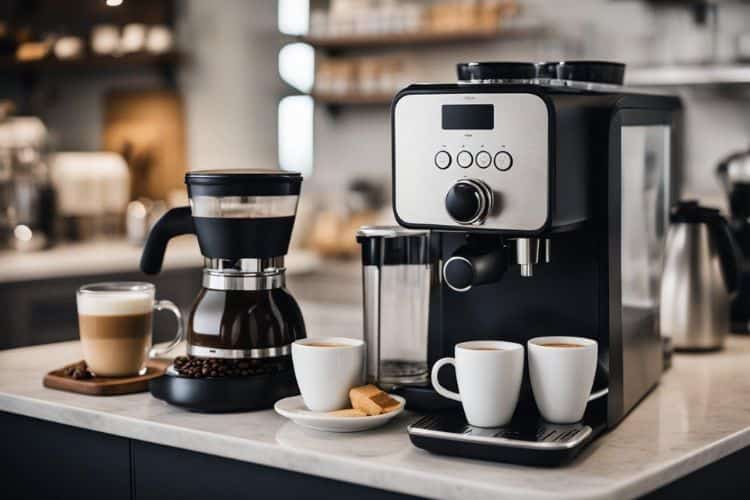
To enjoy the perfect latte, it’s essential to keep your equipment in top-notch condition. In this section, you’ll learn how to maintain the most crucial latte-making tools: espresso machines, milk frothers, Nespresso devices, French presses, and portafilters.
Espresso Machines:
Regular cleaning is key to an espresso machine’s performance. Start by wiping the steam wand and the exterior after each use. Additionally, purge the steam wand and run a backflush cleaning cycle weekly.
Don’t forget to descaling the machine every few months to remove mineral buildup and ensure unobstructed water flow.
Milk Frothers:
After each use, rinse out your milk frother and let it air dry. For a deeper clean, use warm water and mild detergent weekly to remove milk residue and prevent bacterial growth. It is essential to keep the frothing nozzle clear of blockages.
Nespresso:
To maintain a Nespresso machine, empty and clean the water tank, drip tray, and capsule container regularly. You should also descale the machine every three months or according to the manufacturer’s instructions.
French Press:

After brewing a latte using a French press, rinse the plunger and carafe thoroughly. To sanitize the press, fill the carafe with warm, soapy water, fully submerge the plunger, and then scrub gently. Finally, disassemble and wash the parts at least once a week.
Espresso Beans:
To preserve the freshness of espresso beans, store them in an airtight container in a cool, dark location. Keep in mind that freshly roasted beans should be used within two weeks, while pre-ground beans deteriorate faster and should be used within a week.
Portafilters:
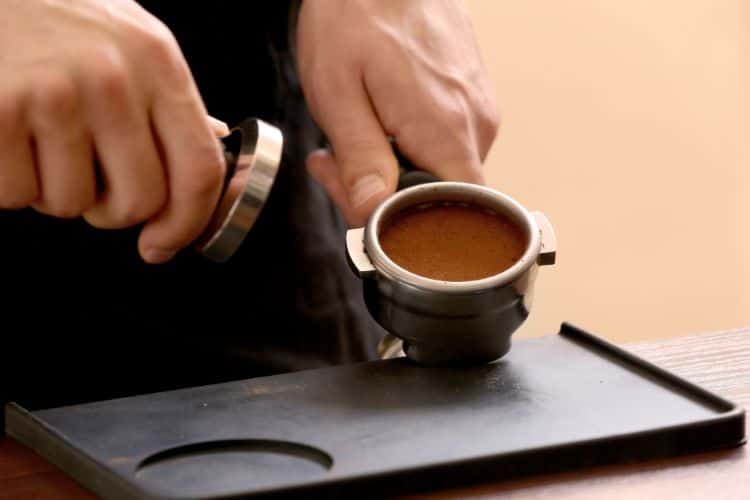
To avoid tainted flavor, clean the portafilter after every brew by knocking out the used grounds, rinsing with hot water, and towel drying to remove residual oils and moisture. For a deeper clean, soak the portafilter in warm water mixed with a specialized coffee cleaner on a monthly basis.
By diligently maintaining your latte-making equipment, you can consistently produce a delicious and satisfying cup. That well-earned latte will taste even better knowing you’ve cared for your tools and equipment.
Latte Making Products and Brands
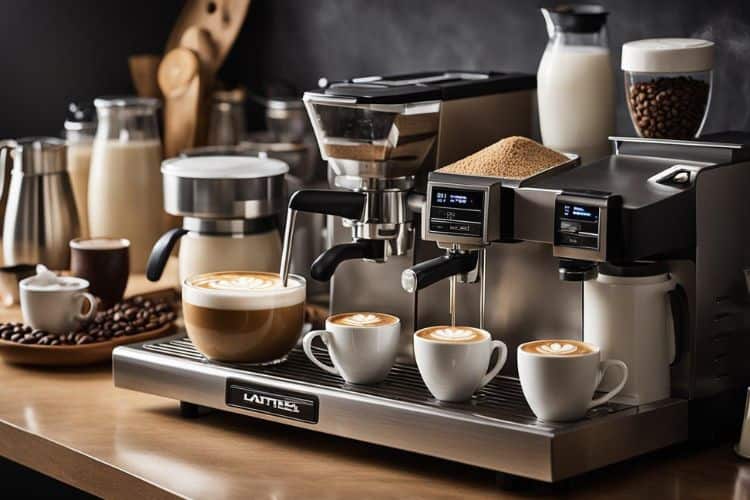
When it comes to making lattes at home, you have several options at your disposal. In this section, we’ll discuss some of the popular products and brands that can help you make the perfect latte without hassle.
Nespresso and Keurig are two well-known brands that offer convenient single-serve coffee machines. Nespresso’s machines mainly focus on espresso-based drinks, making them a great choice for latte enthusiasts.
The Nespresso Lattissima model, for instance, comes with a built-in milk frother that can easily whip up a creamy latte. On the other hand, Keurig’s machines lean toward traditional drip coffee, but the Keurig K-Cafe model can also make lattes and cappuccinos thanks to its frothing feature.
Regarding coffee beans, Starbucks provides a popular option with their Espresso Roast, which is ideal for crafting a latte. This dark roast offers a rich and robust flavor that pairs wonderfully with frothed milk.
For easy preparation, consider these tools:
- Electric milk frothers: These gadgets quickly create a smooth, frothy texture for your milk. Brands like Breville and Nespresso Aeroccino offer popular options.
- Manual milk frothers: If you prefer a hands-on approach, these tools, like Bodum’s Latteo Milk Frother, help you achieve the desired froth by manually pumping the milk.
- Stovetop espresso makers (Moka pots): Brands like Bialetti offer Italian-style stovetop espresso makers that give you rich, strong espresso for your latte without an expensive machine.
By choosing the right equipment and ingredients mentioned above, you’ll be set to make a delicious and satisfying latte at home. Experiment with different combinations to find your favorites and enjoy a barista-quality latte anytime.
Frequently Asked Questions
A latte typically consists of three main components: espresso, steamed milk, and milk foam. You’ll need an espresso machine to brew the espresso and a milk frother or steam wand to create the milk foam.
You can still enjoy a delicious latte without investing in an espresso machine. Start by brewing a strong cup of coffee, then heat up milk in a microwave or stove top.
Afterward, use a milk frother or an immersion blender to froth the milk, and finally mix it together with the coffee.
While both are espresso-based drinks, the primary difference lies in the milk-to-foam ratio. Lattes have more steamed milk and less foam, resulting in a creamier drink, whereas cappuccinos consist of equal parts espresso, steamed milk, and milk foam, offering a stronger espresso flavor and a lighter texture.
To steam milk, you’ll need a steam wand attached to your espresso machine or stove. Start by pouring cold milk into a stainless steel pitcher and slowly inserting the steam wand, angled to create a vortex.
Steam the milk until it reaches around 150°F (65°C), maintaining a creamy, microfoam consistency.
The perfect latte balances espresso and milk flavors, usually following a 1:2 ratio – that is, ⅓ espresso and ⅔ steamed milk.
You can adjust the ratio to your taste preference, but maintaining this standard proportion creates a harmonious blend between the bold espresso and the sweetness of the milk.
Begin by pouring the steamed milk slowly into the espresso, starting from a higher point and lowering it as you pour. While pouring, wiggle the pitcher back and forth to create a pattern, such as a rosetta or a heart.
Practice makes perfect, so don’t be discouraged if your latte art isn’t flawless on your first try. Experiment with different pouring speeds and movements to discover your artistic style.
Remember, enjoying a well-prepared latte is about more than the visuals – savor the flavors, the creaminess, and the warmth of your cozy beverage.
Footnotes
By pressing the coffee grounds firmly, you’ll create an even and consistent bed for the water to flow through. This ensures that your espresso shot will have a balanced taste. ↩

